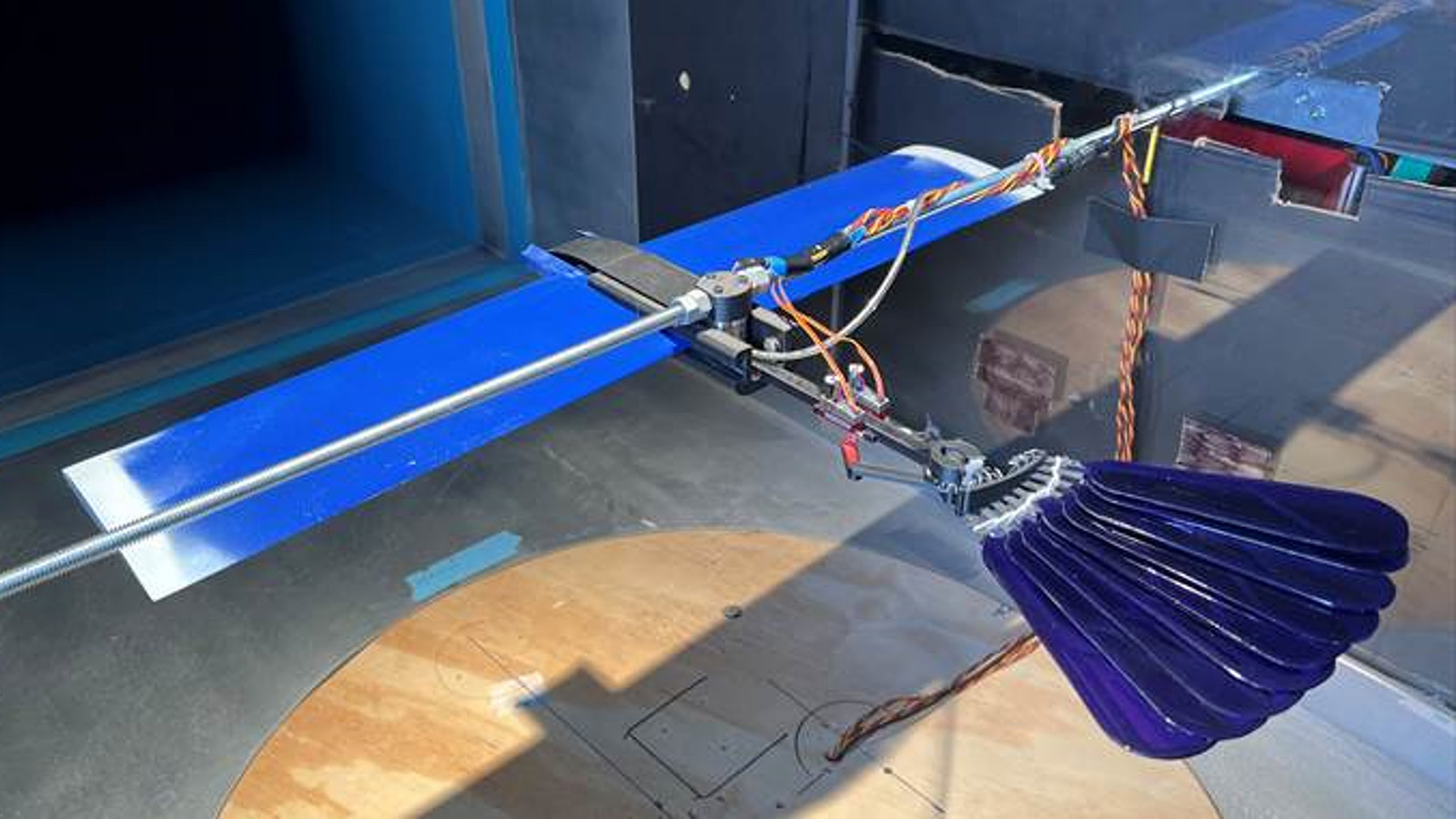Stay Up to Date
Submit your email address to receive the latest industry and Aerospace America news.
The work of the Adaptive Structures Technical Committee enables aircraft and spacecraft to adapt to changing environmental conditions and mission objectives.
This year’s adaptability achievements centered on aeronautical challenges, especially wing-related ones. A team at the German Aerospace Center, or DLR, explored the use of hyperelastic solid-state joints to bond the lower and upper skins of a prototype wing to a variable camber trailing edge. In February, tests on an airfoil segment showed that large morphing deformations are possible with very low actuator forces. In July, they proved that spanwise differential cambering is also possible with this approach. These findings are being transitioned to flight tests with unoccupied aerial systems, UAS. Researchers predict that a higher aerodynamic efficiency can be achieved while keeping the aircraft weight roughly equivalent.
With aerodynamic modeling, researchers at the University of California, Davis predicted the effects of avianlike morphological changes, including wing sweep, wing dihedral, wing extension, wing airfoil incidence angle, wing camber, tail spread and tail incidence. In June and July, in collaboration with the Army Research Laboratory in Maryland, they completed wind tunnel tests that explored the role of birdlike tail morphing to enhance perching capabilities. These new results will be combined with previous bird flight studies, low-fidelity models and artificial intelligence to identify coupled wing-tail morphing patterns for a small UAS, on which they will test advanced maneuvers.
Between June and October, a team at Texas A&M University, in collaboration with NASA’s Langley Research Center in Virginia, completed a wind tunnel model to examine the efficiency of a slat gap filler in reducing aeroacoustic noise, with testing planned over the next year. With the model-scale NASA-Boeing Common Research Model wing, they plan to study the aerodynamic and aeroacoustic behavior of a deployable gap filler for the first time. A slat gap filler reconfigures the recirculation region beneath a leading-edge slat, reducing noise radiated from the wing to observers on the ground, especially during landing.
Regarding lunar research, Texas A&M researchers, in collaboration with NASA’s Johnson Space Center in Texas, have developed and tested a shape memory alloy torque tube thermosiphon, a type of passive heat management device. In September, they evaluated the thermosiphon in combination with a rotating radiator panel that provides heat rejection. Going forward, this subsystem is to be integrated with a fuel cell simulator to verify its operational effectiveness and its ability to survive the lunar night. The combined system could enhance the reliability and extend the operating life of lunar fuel cells while reducing thermal control complexity.
Of special interest this year was the transition of aerospace-originated concepts to new research sectors. In March, researchers at Concordia University in Quebec developed an accurate, computationally efficient nonlinear dynamic model and AI-based control algorithms for a 4D-printed, adaptive magnetoactive soft continuum robot. This robot, attached to a surgical wire, can navigate intricate brain pathways to deliver therapeutic treatments for strokes and aneurysms, including drug delivery, clot ablation and stent deployment. In a manner similar to that observed in aerospace vehicles, the innovative AI-driven control algorithm allowed the robot to accurately follow predetermined neurovascular paths in a custom-made vascular phantom, significantly improving the effectiveness of minimally invasive surgeries. This could pave the way for autonomous robotic platforms that reduce patient recovery time and costs.
Stay Up to Date
Submit your email address to receive the latest industry and Aerospace America news.




